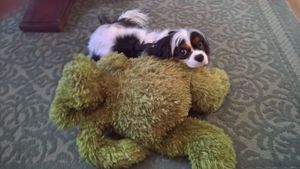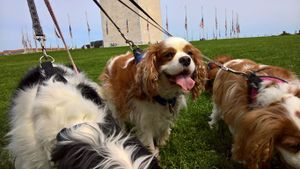Summarizing
Summarizing is an important skill for students for
- textual comprehension
- application of ideas
Summarizing
- the important cognitive skill of generalizing core or "Big Ideas" from larger textual or other source
- "cognition" = conscious intellectual activity, i.e., deliberate thinking
- summarizing =
- distinguishing between background and important detail
- processing in one's own words
Bloom's taxonomy of learning

- Summarizing is an important fundamental step towards higher-order thought
- per Bloom's "taxonomy" of learning
- summarizing is part of the 2nd order learning category, "Comprehension"
- therefore, summarizing is essential for comprehension
- along with summarizing, per Bloom's taxonomy "Comprehension" also includes
- restatement, paraphrasing, illustrating, explaining, distinguishing, extending
- summarizing is part of the 2nd order learning category, "Comprehension"
Bloom's action verbs
Analyze
Apply
Appraise
Assess
Assume
Build
Categorize
Choose
Classify
Combine
Compare
Compile
Compose
Conclude
Conclusion
Construct
Contrast
Create
Criteria
Criticize
Decide
Defend
Define
Demonstrate
Design
Determine
Develop
Discover
Discuss
Disprove
Dissect
Distinguish
Divide
Elaborate
Estimate
Evaluate
Examine
Explain
Extend
Extrapolate
Find
Function
Identify
Illustrate
Importance
Infer
Inspect
Interpret
Interview
Judge
Justify
Label
List
Make use of
Mark
Match
Measure
Model
Motive
Name
Organize
Outline
Perceive
Plan
Predict
Prioritize
Prove
Rate
Recall
Recommend
Relate
Rephrase
Select
Show
Simplify
Solve
Summarize
Support
Survey
Test
Utilize
- for fuller list go to Blooms_Taxonomy.pdf (wisc.edu)
Elements of summarizing
Active reading
- thinking while reading =
- applying prior knowledge
- identifying new knowledge (unfamiliar words, ideas, details)
- questioning and developing questions
Simplification
- identify the core of a sentence
- SUBJECT VERB OBJECT
- see how the sentence builds up from there
- identify "emphasis shifts"
- which part of of the sentence does the writer wish to emphasize
- independent clauses = emphasis
- dependent and subordinate clauses = de-emphasis
- which part of of the sentence does the writer wish to emphasize
- getting around unfamiliar words
- strategy = replaced the unfamiliar word with "something" and read around it
- an exception can be verbs, which are important to know for sentence comprehension
- strategy = replaced the unfamiliar word with "something" and read around it
Identify background details v. Big Ideas
- which details define meaning
- v. which details add to but do not define meaning?
- ex. "Mackie is a happy little black, brown & red dog who loves to play with his toys"
- "little" and "black, brown and red" do not change the meaning that "Mackie is a happy dog who loves to play with toys"
- ex. "Mackie is a happy little black, brown & red dog who loves to play with his toys"
- v. which details add to but do not define meaning?
Techniques for summarizing
Re-statement of words & sentences
- summarization requires comprehension
- but it is a skill that can be taught
- student comprehension is enhanced by re-stating in one's own words
- it helps to discern what the student actually understands
"Teaching it back"
- one method to enhance summarization and student comprehension is to engage the student in "teaching it back" to someone else
- "you can't teach it if you don't know it" works as a good measure of student comprehension in any subject or skill
- in summarization it is helpful becuase it forces the student to articulate his or her own comprehension
- if the student gets stuck, the teacher can ask the student to identify Prior Knowledge:
- i.e., "Well, what do you know from this passage?
- and build up comprehension from there
Asking questions
- question formulation is a process of
- 1. identifying prior knowledge (what is understood or familiar)
- 2. identifying new knowledge (what is not understood or familiar)
- and 3. extending that prior knowledge by asking a question about it or the new knowledge
Thinking up titles
- Titles are summaries
- ask the student to give each passage segment a title
Lesson Plan example or student exercise
Example 1: discerning background details from Big Ideas

1. Details:
- black, white and red-haired, small dog
- big green toy
- green carpet
- flooring showing in upper right corner
- foot of a table showing to upper left
2. Unimportant details: 3. Important details
- dog
- toy
4. Other ideas to infer:
- dog posed quietly for the photo
- dog seems to have already played with the toy
- the toy does not appear to have rips from chewing
5. Big idea:
- what do we learn about the dog?
- he likes the toy or toys
- therefore, It is a playful dog = the BIG IDEA
- what do we learn about the dog?
Example 2: discerning background details from Big Ideas

1. Details:
- three dogs, one multi-colored, two white-brown
- dogs on the grass, one sniffing the ground
- Washington Monument in the near background
- some other buildings in the further background
- flags
- we might also notice that the flags are at half-staff
2. Unimportant details:
- far background buildings
- grass (fields have grass, so we learn nothing from that)
- presence of flags at Washington Monument
3. Important details
- three dogs
- the Washington Monument
4. Other ideas to infer:
- the photographer, perhaps owner, deliberately posed the dogs in front of the Washington Monument
- perhaps the photographer/owner could not get the dogs to pose and all three look at the camera
- the flags at half-staff could be significant
5. Big idea:
- what do we learn from the photo?
- the dogs are alert, not fighting
- the choice of the Washington Monument in the background is purposeful
- therefore, Three dogs enjoying a walk by the Washington Monument = the BIG IDEA
- what do we learn from the photo?